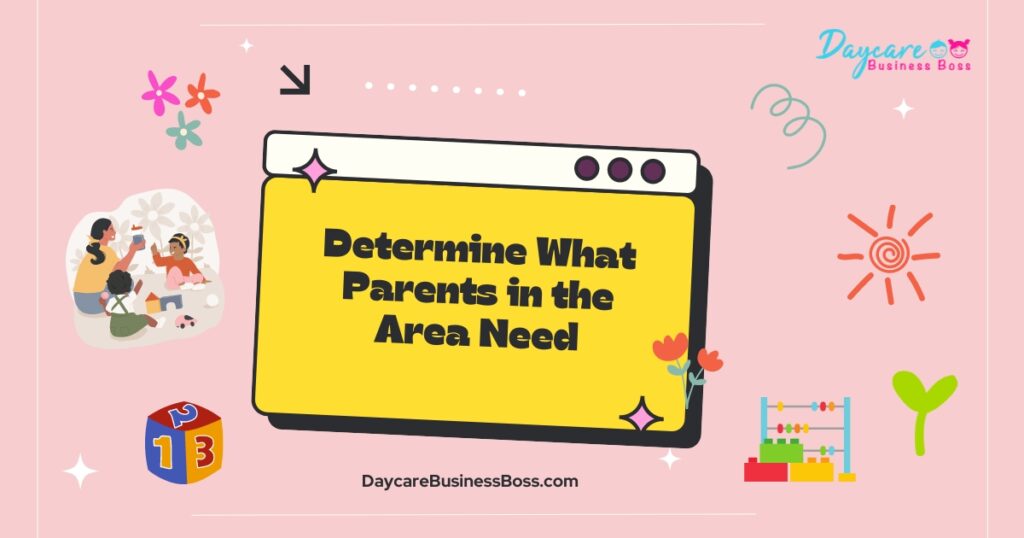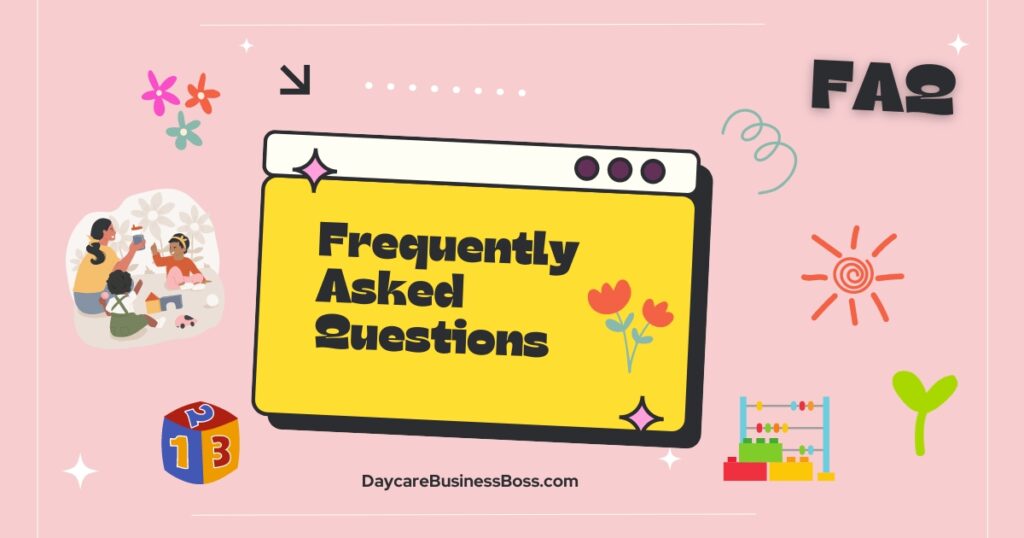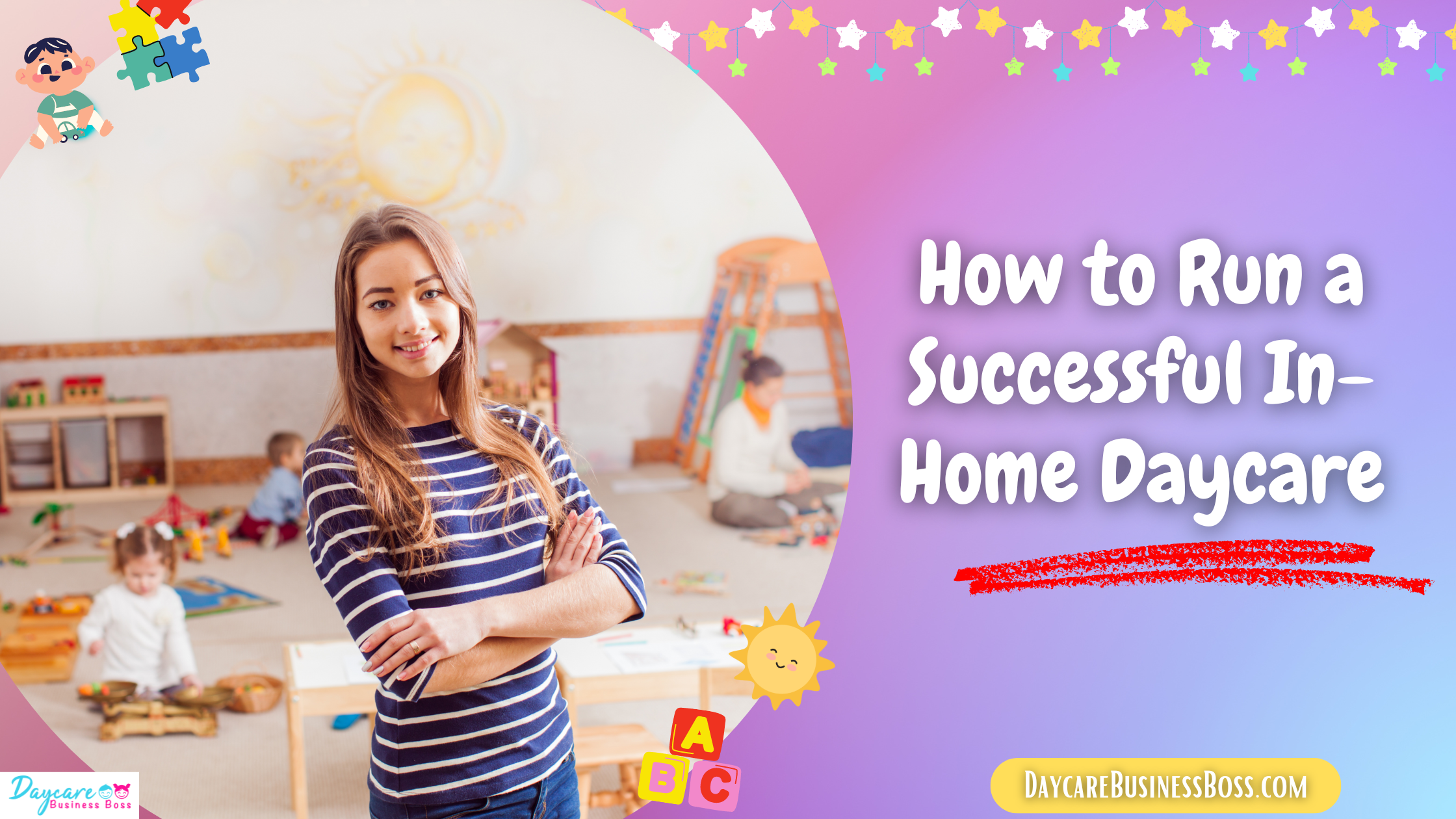More parents today are deciding to stay at home with their children. And many are choosing to open in-home daycares for additional income. If you’ve thought about opening up your own home daycare, there are a few steps you should follow in order to be successful.
In order to run a successful in-home daycare, before you open, you should discuss it with your partner or family members, determine what parents in the area need, discover the licensing and insurance requirements for your state, determine your price, create your business plan, and create your business budget. Once you open you need to market your daycare by telling everyone about it, and create business contracts that you will be having parents agree to and sign.
Opening your own in-home daycare can seem like a lot, and operating a successful one can be very involved. But knowing exactly what you need before and after you open can make everything go more smoothly. The more you know, the more successful your daycare will be!
Before You Open
Before you can open your own home daycare, there are a number of things you must do. Some are practical, like childproofing your home, and some are required by law, such as acquiring the necessary permits and licenses.
Discuss With Your Partner
While, more than likely, one adult will be solely responsible for the daycare, it will inevitably affect any adult living in the home. On days off, they will probably be helping. And all adults living in the home will have to go through most of the same training and background checks.
Additional children in the home, especially small ones, also usually means additional messes. Young children can cause a lot of wear and tear in the home, which can cause an effect on its value. Because of these, both partners should discuss the opening of any in-home daycare, and come to a reasonable conclusion, if not an outright agreement.
Determine What Parents in the Area Need

One way to ensure a successful daycare is to figure out what parents in your area need and are looking for. This could be something that other daycares in the area don’t supply, or something parents wish there was more of. Talk to parents in the area about what they’d look for in a daycare. You can even use social media to ask other parents what they’d like.
Whether it’s a daycare that serves organic food, one that uses a specific teaching curriculum, or even one that offers late or overnight shifts, you should figure out what will set you apart from other daycares. Providing something that parents want is an important tool to having a successful in-home daycare.
Discover the Licensing and Insurance Requirements for Your State
Each state has different requirements when it comes to the training, licenses, and insurance that you need in order to start a home daycare. Be sure to find out exactly what your state requires for you to become licensed. For most states, that will include a certain number of training hours.
Most states will also require any adult living in the home to undergo a background check, and to have some level of training as well. CPR and child medical care will likely also be required through training classes. As each state differs on what they require, it’s important that you know the requirements for your state, even if you’ve had a daycare in a different state.
You’ll also need to make sure that you are up on the insurance requirements of the home, including fire and damage insurance. Before you can open your daycare, you’ll need to schedule a visit with a fire inspector as well. Daycares, as we all hope, need to be determined as safe and welcoming for any child before the doors open to the public.
Determine Your Price
The best way to figure out what your price should be is to find out how much local daycares are charging. Whether by calling them and asking directly, or by talking to other parents who use those daycares, you’ll get a good idea of what your area daycares charge, and can determine your price accordingly.
If you are going to be offering services the other daycares don’t, such as the serving of organic food or a more complicated curriculum, you can think about charging a little more for your daycare. If you aren’t offering anything the others don’t, you may want to charge a little less. Determining your price before you open can help you plan your daycare budget.
Here are three tuition rate increase example letters!
Create Your Business Plan
Creating a business plan will make things go more smoothly once you do open your daycare. Include your purpose for opening a daycare, what you hope to get out of it, and what you hope to provide to others.
Make a list of questions that need to be answered before creating your business plan, so you can make it as informative as possible.
Some questions may include:
- What items are required by law (such as a changing table, cribs, etc.)?
- What will your hours be?
- How many children can legally be in one daycare?
- How many children will you be comfortable watching?
- What will you charge?
- What are your expenses?
- What days will you not be open (such as holidays, family vacations, etc.)?
- Will you serve food or have the children bring their own?
- How much do you need to invest?
- How long will it be until you make a profit?
- Will you be taking the children out, and if so, do you have car seats or other items needed for travel?
The more you plan ahead, the easier it will be to handle any obstacles or difficulties, so don’t be afraid to ask many questions. If you don’t have answers to some, take some time to think about them. You’ll never regret overthinking in this case.
Create Your Business Budget
Once you’ve determined how much you’re going to charge and what amount of children you’ll be comfortable watching, you can create a rough business budget. Figure out what you expect to make, and what your expenses will be. As you open and things change, your budget will also need to be updated.
You don’t need to go crazy with toys or equipment yet, since you won’t really know exactly what you need until you open. Just create a clean and inviting area that is kid friendly, and get the things that are required, or anything you need for childproofing. A few toys will suffice for the start, and you certainly don’t need to get brand new ones. Checking the local thrift shop is a great, budget-friendly way to find the toys you need.
Creating Contracts
This is an aspect many daycare owners fail to think about, but it can turn out to be one of the most important. Legally speaking, the more you have in writing, the better off you will be, and running a daycare is no exception.
Some things to include in your contracts are:
- Your weekly or monthly cost
- When payments are due
- Any late fees that you have
- Your operating hours
- Your sickness policy
- Any days you will not be open
- If there are any penalties for late pick ups
- How any disciplinary issues will be handled
Be as precise and clear as possible in your contract, so parents know exactly what they are getting and what they should be expecting. Not only does this provide you protection in the event of any legal action, but it also makes the relationship with parents easier. When both parties know exactly what to expect, businesses are more successful and have fewer problems. And that’s exactly what both parents and you want.
After You Open
Once you do open and begin accepting children, there are a few things you should do to make your daycare more successful. Marketing and creating contracts are two of the most important.
Marketing Your Daycare
Marketing your daycare simply means telling everyone you know about it. Friends, family, and coworkers are a great place to start when marketing your daycare. You can use social media to advertise, including blogs. Many daycare owners blog about their days, the children, and any new or exciting things that may have happened that day. Short blog posts are easy to write, and are a great way to advertise.
Wherever you gather with other parents, such as church, play groups, playgrounds, etc, you should be telling them about your new daycare. Make sure to point out any areas that make yours stand out, and the word of mouth should grow your business all on its own. You can also create flyers to hand out so people have a physical reminder of your daycare.
Related Questions

Where can I find my state’s regulations and requirements?
The National Database for Child Care Licensing and Regulations includes contact information and websites for each state’s licensing department. All requirements and regulations should be found on your state’s official Child Care Licensing website. If you want to be certain, you can call your state’s Child Care Licensing Center and get the answers to any questions you may have, including what is required for you to open your own in-home daycare.
How many children can I have in my in-home daycare?
The limits on how many children you can have in your daycare will be determined by what state you live in, the size of your home, and how many adults will be working at the daycare. A usual standard is that an in-home daycare with one guardian have less than 8 children. That number can increase to 15 if there will be more guardians in the daycare. Be sure to check your state’s requirements to find the exact number for you.
Please note: This blog post is for educational purposes only and does not constitute legal advice. Please consult a legal expert to address your specific needs.
To learn more on how to start your own daycare checkout my startup course and documents here.

Meet Shawn Chun: Entrepreneur and Childcare Business Fan.
I’m a happy individual who happens to be an entrepreneur. I have owned several types of businesses in my life from a coffee shop to an import and export business to an online review business plus a few more and now I create online daycare business resources for those interested in starting new ventures. It’s demanding work but I love it. I do it for those passionate about their business and their goals. That’s why when I meet a childcare business owner, I see myself. I know how hard the struggle is to retain clients, find good employees and keep the business growing all while trying to stay competitive.
That’s why I created Daycare Business Boss: I want to help childcare business owners like you build a thriving business that brings you endless joy and supports your ideal lifestyle.

